
Blended Learning Design
Data Literacy through Sports Analytics
Tina Leard (Cybera)
Michael Lamoureux (University of Calgary)
October 2020

October 2020

(Alberta Education, 2000, 2007, updated 2016, 2017)
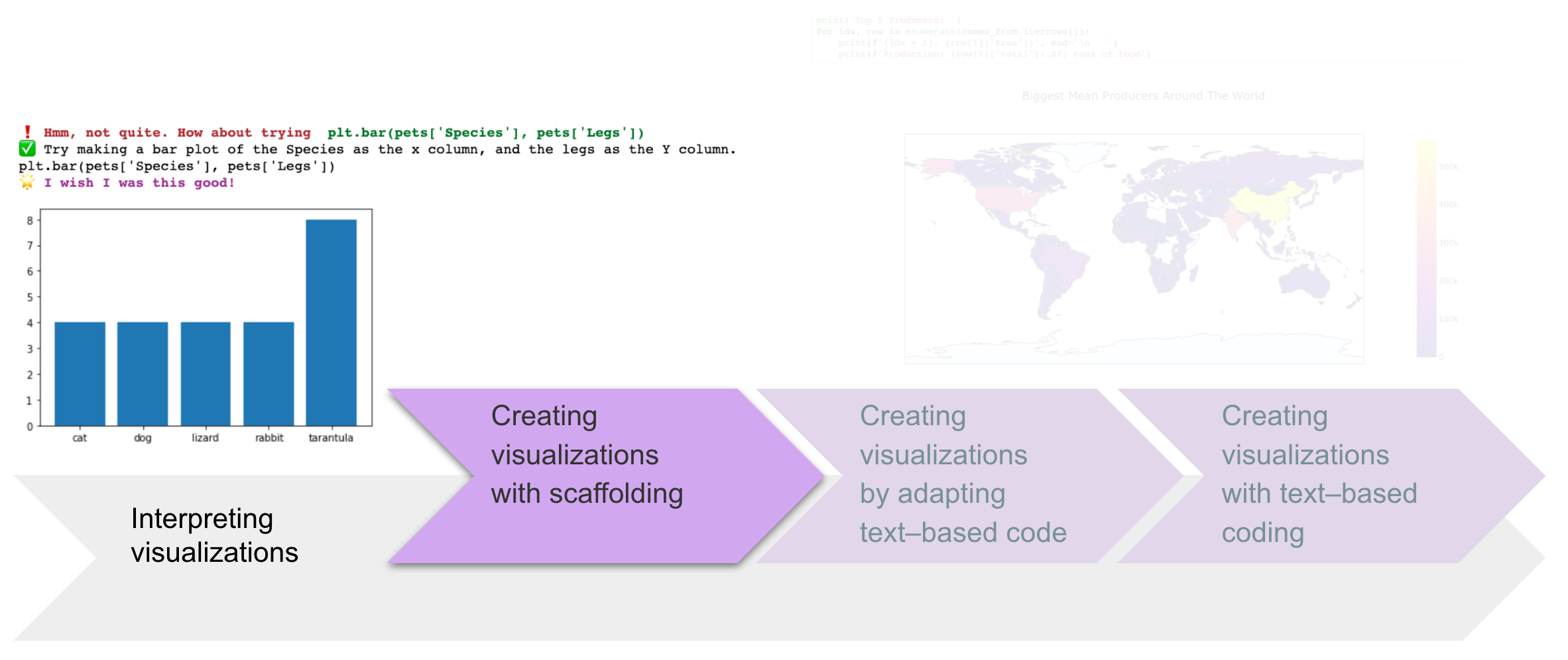
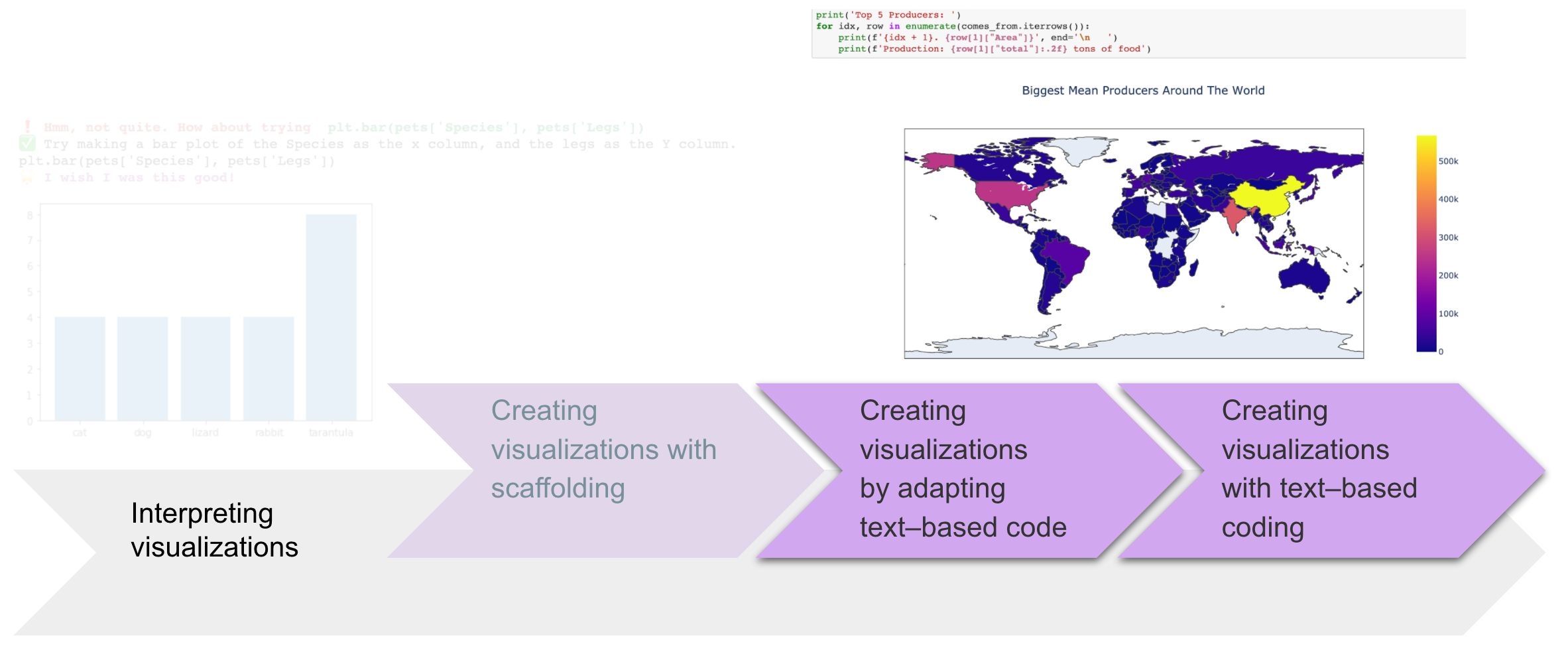

connections and real-world examples
Online communication,
sometimes through shared video analysis spaces
Video replay during games and training
Post–game video analysis, limitted statistics
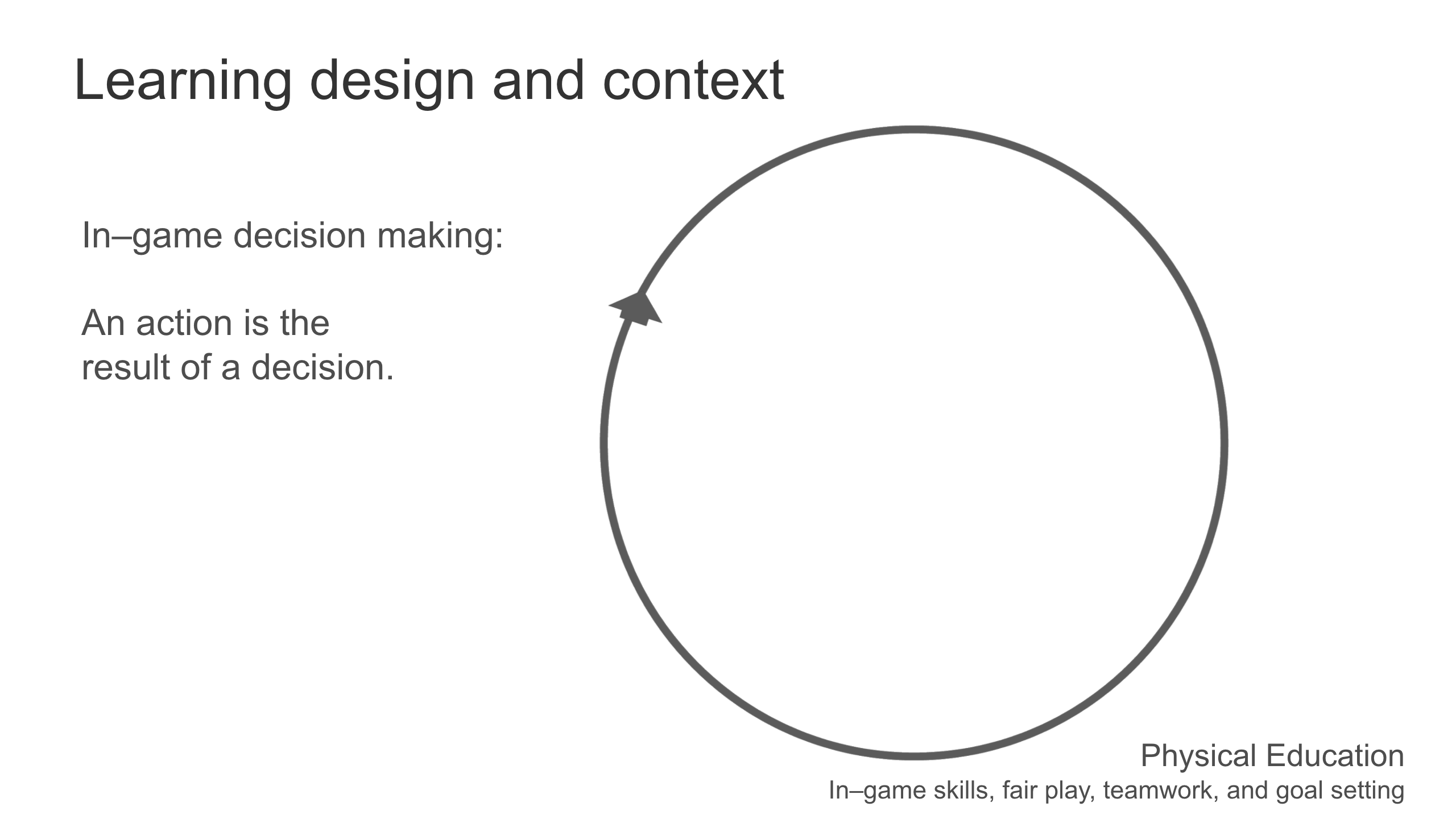
The context is physical education, and the content is statistics. Within physical education, in-game skills, fair play, teamwork, and goal setting are integrated. Those outcomes can be applied to in-game decision making. The goal setting can also be part of the communication resulting from the data analysis. When considering in-game decision making, we can define an action as the result of a decision. Decision making is part of a learning cycle that incorporates a technological feedback loop.
(Alberta Education, 2000)
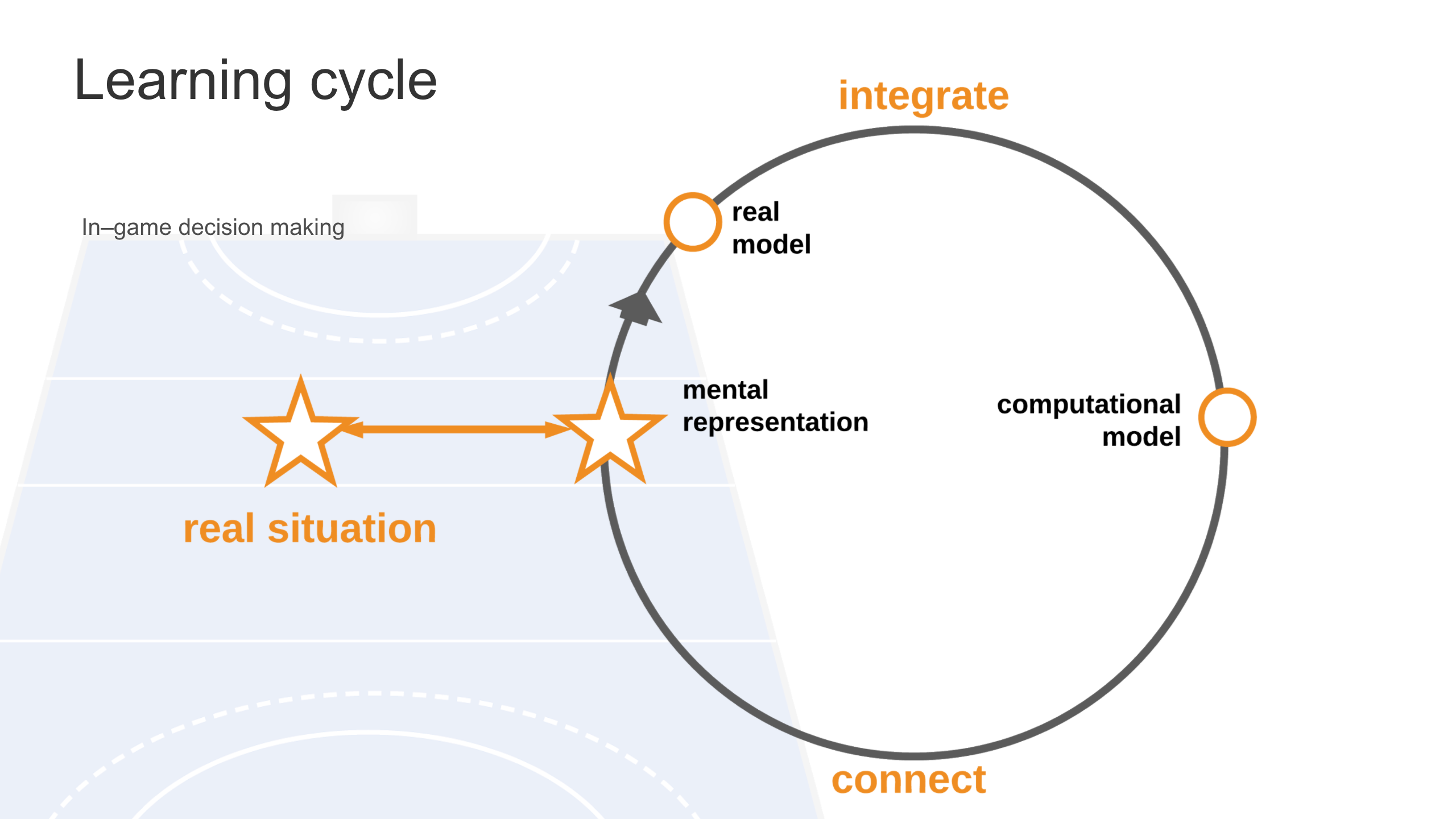
The real situation occurs on the field where a decision is made and an action is executed. Then, the athlete forms a mental representation, processing occurs, and a real model is formed. The real model is integrated into the computational model, which results in a technological feedback, then a connection is made back into game play.
(Butler & Winne, 1995; Cleary & Zimmerman, 2001; Hadwin et al., 2017; Leard & Hadwin, 2001)
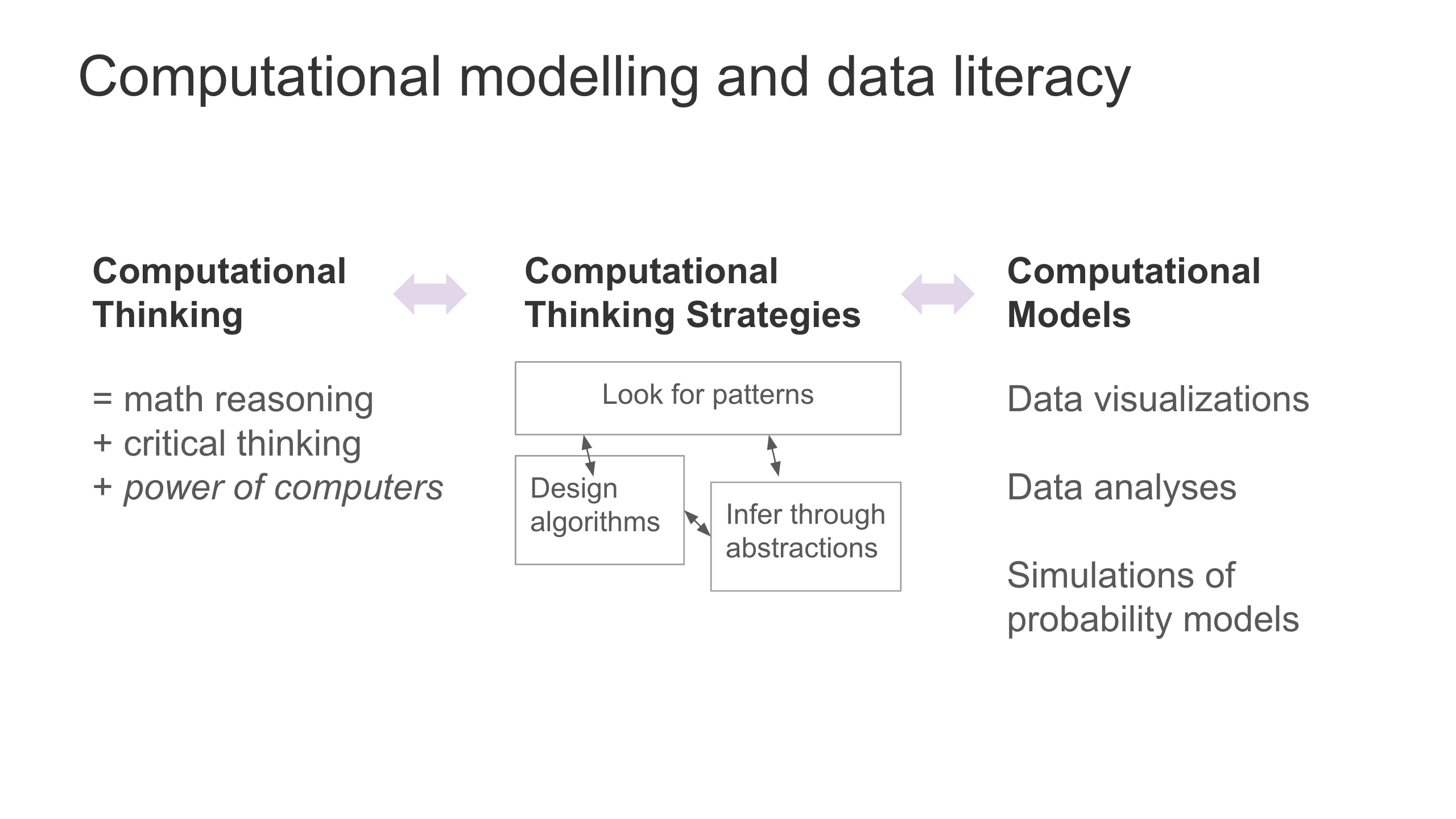
The definition of computational thinking can vary.
Computational thinking within data literacy is math reasoning combined with critical thinking plus the power of computers. We can use computers to do work more efficiently for us, like compute thousands of lines of data.
Under that definition of computational thinking, we can apply computational thinking strategies. The foundational process is decomposing to look for patterns. We can use computer programming to design algorithms to look for patterns. With these algorithms, we can infer through abstractions.
The abstractions can be in the form of computational models: data visualizations (including graphs from the curriculum), data analyses, and simulations of probability models. The data visualizations can extend beyond the curriculum to support math reasoning.
(Berikan & Özdemir, 2019; Gadanidis, 2020; Guadalupe & Gómez-Blancarte, 2019; Leard & Hadwin, 2001)
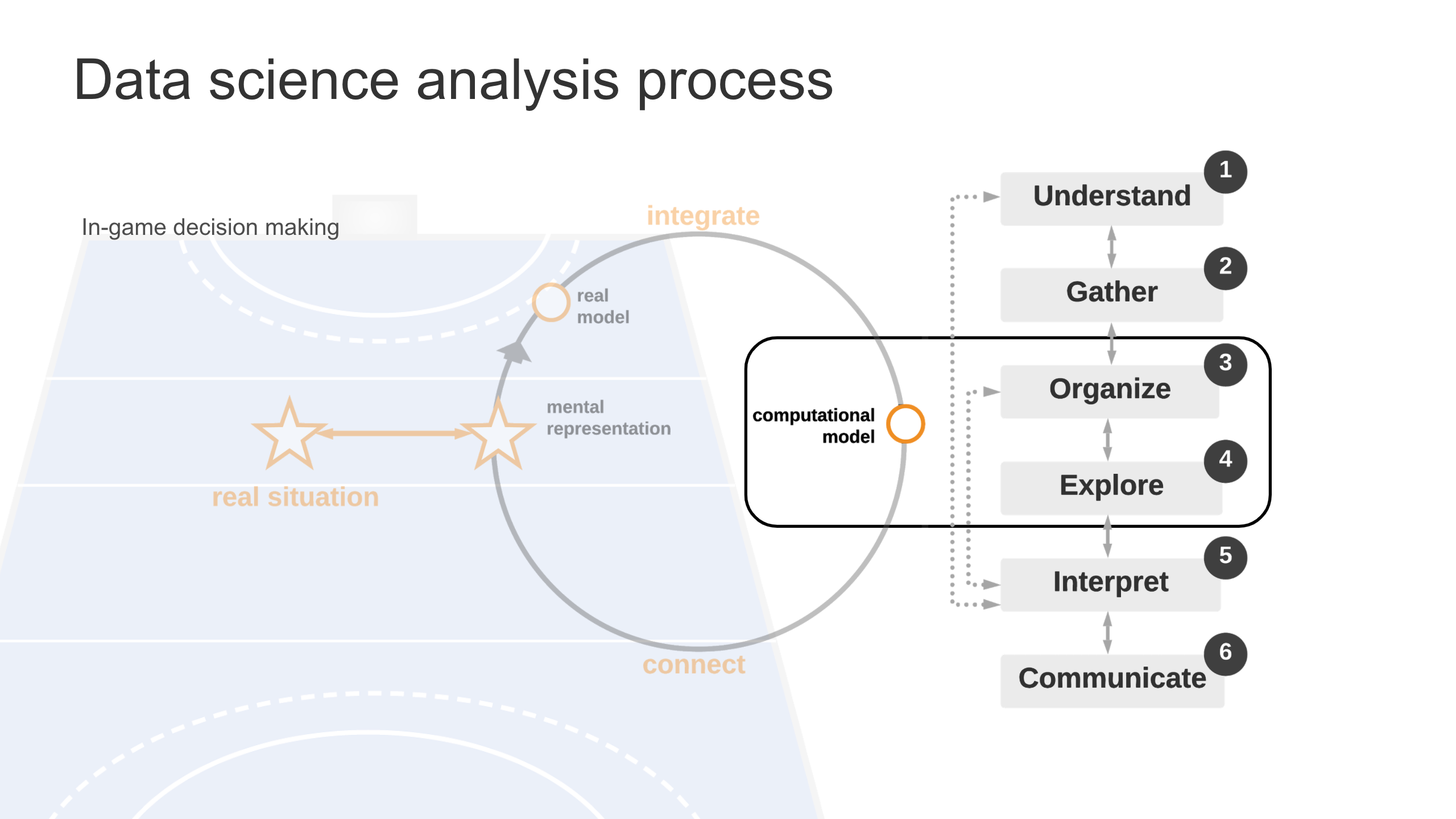
This data science analysis process was modified from how expert data scientists analyze data and aligned to several provincial curricula.
There are six steps:
(Alberta Education, 2007, updated 2016; Ferri, 2006; Leard & Hadwin, 2001; Manitoba Education and Training, 2020; Ontario Ministry of Education, 2020)
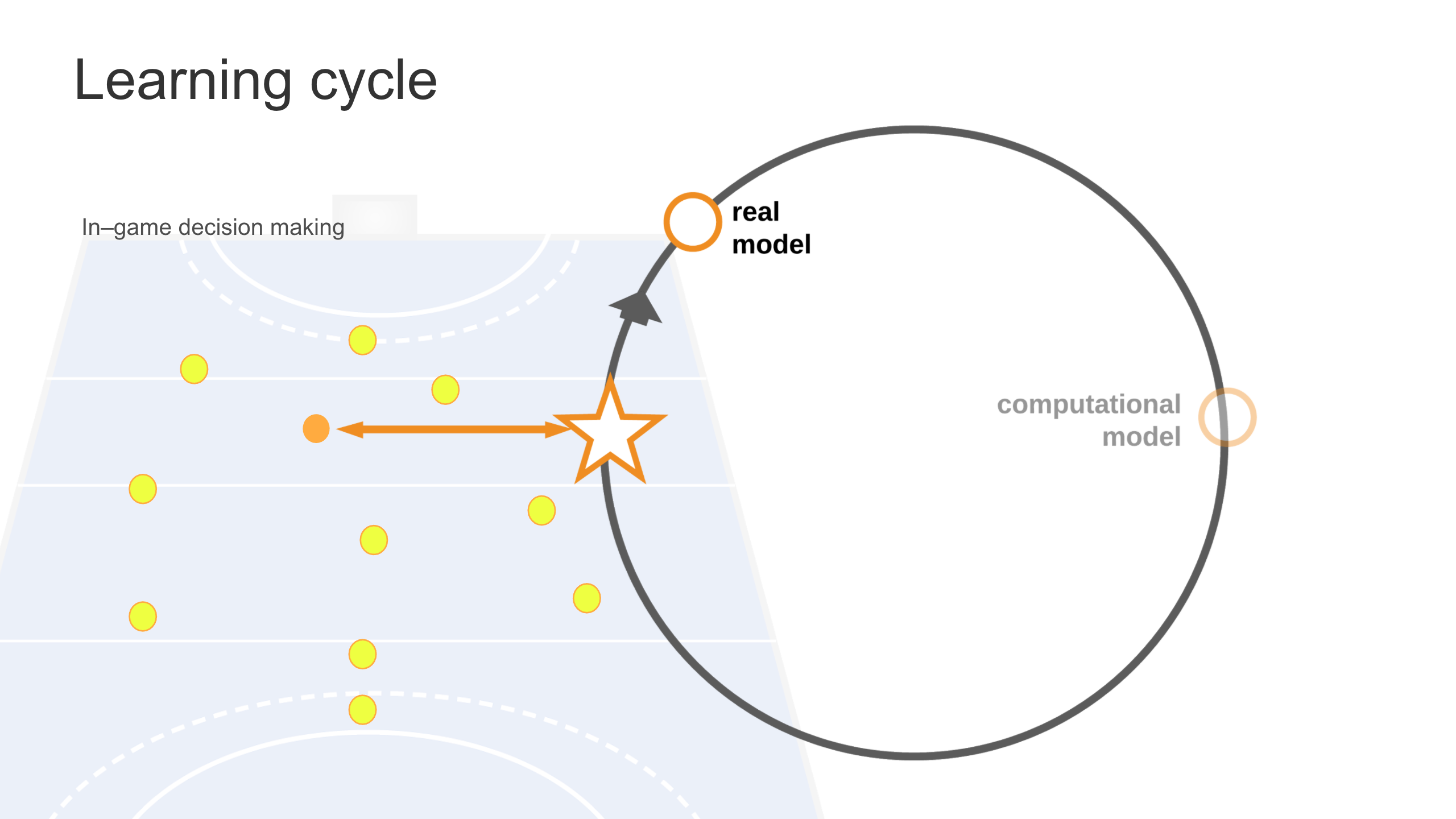
How the individual makes decisions within the collective responsibilities and actions of the team can be considered. In-game decision making involves in-game communication with team members, with each athlete referring to their own real model.
While in-game decision making will always produce a real model, athletes also need to decide when it is appropriate to connect the real model to the computational model and integrate that connection back into game play.
(BC Ministry of Education, 2020; Hadwin et al., 2017; Leard & Hadwin, 2001)
Alberta Education. (2000). Physical education [Program of Studies]. https://education.alberta.ca/media/160191/phys2000.pdf
Alberta Education. (2007, updated 2016). Mathematics kindergarten to grade 9 [Program of Studies]. https://education.alberta.ca/media/3115252/2016_k_to_9_math_pos.pdf
Alberta Education. (2017). Career and Ttechnology foundations [Program of Studies]. https://education.alberta.ca/media/3795641/ctf-program-of-studies-jan-4-2019.pdf
BC Ministry of Education. (2020). BC's digital literacy framework. https://www2.gov.bc.ca/assets/gov/education/kindergarten-to-grade-12/teach/teaching-tools/digital-literacy-framework.pdf
Berikan, B., & Özdemir, S. (2019). Investigating “problem-solving with datasets” as an implementation of computational thinking: A literature review. Journal of Educational Computing Research, 58(2), 502–534. https://doi.org/10.1177/0735633119845694
Butler, D. L., & Winne, P. H. (1995). Feedback and self-regulated learning: A theoretical synthesis. Review of Educational Research, 65(3), 245–281. https://doi.org/10.3102/00346543065003245
Cleary, T. J., & Zimmerman, B. J. (2001). Self-regulation differences during athletic practice by experts, non-experts, and novices. I Journal of Applied Sport Psychology, 13(2), 185–206. https://doi.org/10.1080/104132001753149883
Ferri, R. B. (2006). Theoretical and empirical differentiations of phases in the modelling process. ZDM, 38(2), 86–95. https://doi.org/10.1007/bf02655883
Gadanidis, G. (2020, September 2). Shifting from computational thinking to computational modelling in math education [Online plenary talk]. Changing the Culture 2020, Pacific Institute for the Mathematical Sciences.
Guadalupe, T. & Gómez-Blancarte, A. (2019). Assessment of informal and formal inferential reasoning: A critical research review. Statistics Education Research Journal, 18, 8-25. https://www.researchgate.net/publication/335057564_ASSESSMENT_OF_INFORMAL_AND_FORMAL_INFERENTIAL_REASONING_A_CRITICAL_RESEARCH_REVIEW
Hadwin, A., Järvelä, S., & Miller, M. (2017). Self-Regulation, Co-Regulation, and Shared Regulation in Collaborative Learning Environments. Handbook of Self-Regulation of Learning and Performance, 83–106. https://doi.org/10.4324/9781315697048-6
Kastens, K. (2014). Pervasive and Persistent Understandings about Data. Oceans of Data Institute. http://oceansofdata.org/sites/oceansofdata.org/files/pervasive-and-persistent-understandings-01-14.pdf
Leard, T., & Hadwin, A. F. (2001, May). Analyzing logfile data to produce navigation profiles of studying as self-regulated learning [Paper presentaion]. Canadian Society for the Study of Education, Quebec City, Quebec, Canada.
Manitoba Education and Training (2020). Literacy with ICT across the curriculum: A model for 21st century learning from K-12. https://www.edu.gov.mb.ca/k12/tech/lict/index.html
Ontario Ministry of Education. (2020). The Ontario curriculum grades 1‐8: Mathematics [Program of Studies]. https://www.dcp.edu.gov.on.ca/en/curriculum/elementary-mathematics